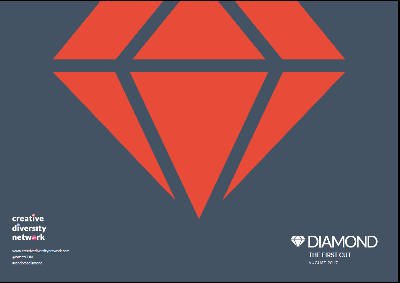
Diamond: The First Cut presents the initial output of a system being built to provide long term monitoring for the TV production industry. It is still being developed and once the system is capturing all commissioned and transmitted programmes from Diamond broadcasters across all relevant genres, it will be possible to interrogate it in increasingly sophisticated ways, for example by genre, role type or seniority.
Creative Diversity Network is committed to providing meaningful and accurate analysis of rigorous datasets, while also protecting the privacy of those who have submitted data to the system. Given these commitments and at this stage, due to the modest level of the data available to CDN, the organisation does not feel it appropriate to offer conclusions and comparisons about workforce diversity. However, the CDN is releasing this ‘first cut’ of the data in the spirit of transparency and one year on from its launch, as promised.
Longer term, broadcasters will be able to use the valuable data collected to take action to increase diversity within channels and at supplier level; holding themselves, their commissioners, their suppliers and others to account for their performance in delivering more diverse on-screen content and off-screen production teams. Longer term, Diamond will be the core tool that CDN will use to discuss with members and stakeholders the interventions and programmes of work that it is planning for the future.
Diamond is a world first: no other broadcasting industry has developed a cross industry approach where competing broadcasters collect and publish diversity data together. Diamond aims - over time - to provide accurate, industry-wide data which will for the first time answer two questions:
- ‘Does the workforce on UK productions, both on and off-screen, reflect the diversity of the UK?’
- ‘Are audiences of all kinds seeing themselves reflected on screen?’
Diamond collects actual diversity data across six protected characteristic groups from individuals who have a role in making television, both on or off screen. These people are asked to complete a simple online form to provide their diversity characteristics. Diamond also records perceived diversity data – the protected characteristics of on-screen contributors as viewers might perceive them to be - which is collected by a member of the production team watching the finished programme. Deborah Williams, CEO of Creative Diversity Network said: “Diamond has been, and still is a hugely complex project to deliver. We now have an operational and systematic approach to collecting meaningful data across the UK industry. Diamond was built to provide long term monitoring, and with less than a year’s worth of data, it would be premature to draw conclusions from it or set definitive benchmarks.
“However, Diamond represents a committed decision by leading UK broadcasters to deliver a change. Now we need every individual within the industry to support the project by entering their data when asked and we will have a real opportunity to take Diamond to the next level and bring about the ambitious change we all want.”
Diamond: The First Cut
This first headline report presents actual and perceived data across the following protected characteristic groups: Female (gender), Transgender (gender identity), people aged 50 and over (Age), Black and Minority Ethnic – BAME (ethnicity), Lesbian, Gay and Bisexual – LGB (sexual orientation) and disabled people (disability). The report covers only the programmes commissioned by the current five Diamond broadcasters (BBC, ITV, Channel 4, Viacom/Channel 5 and Sky) for transmission on the 30 channels run by them. It only covers programmes which have already been broadcast by the time of the report being written and covers all genres apart from news and sport). It does not cover programmes acquired from other broadcasters or non-UK producers) to be shown in the UK; and it only covers programmes commissioned and broadcast since Diamond was launched in August 2016.
During the period 15th August 2016 – 30th July 2017, Diamond recorded more than 80,000 contributions from almost 6000 individual contributors (one contributor may make multiple contributions by for example appearing in, or working on, a number of different programmes or across different episodes of the same series). The response rate of those individuals asked to submit data was just over 24%. Although this is relatively modest, assurance on the integrity of the data included in the report was provided by an independent quality review by NatCen (the National Centre for Social Research*). Of those who submitted diversity data, the overall disclosure rate (the percentage of people who disclosed data about at least one protected characteristic rather than selecting ‘prefer not to say’) is high (99.3%). People were least likely to disclose information about their Age (90.5%) but most likely to disclose data about their Gender Identity (99.4%).
Download the full report:

